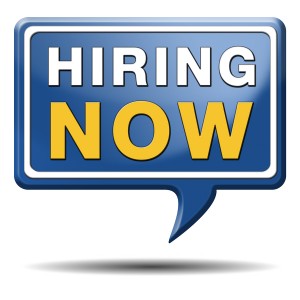Is the United States labor market finally starting to match the temperatures in the southeast? A new private survey of businesses suggests that the job market is beginning to heat up, which adds to projections that the U.S. economy is improving.
Payroll processor ADP published the results of its monthly survey Wednesday and found that private employers added 281,000 jobs last month, up from 179,000 in the previous month. The company says this is a sign of strong economic growth.
Small- and medium-sized businesses were the biggest contributors as they added 117,000 and 115,000 jobs, respectively. Large-sized businesses, meanwhile, only created 49,000 employment positions. The service-providing sector provided the bulk of job creation as it added 230,000 jobs, compared to the goods-producing sector with only 51,000.
 The largest increases in staffing levels when it came to industries were found in professional and business services (77,000); trade, transportation and utilities (50,000); and construction (36,000). The manufacturing industry still remains weak as it added only 12,000 jobs possibly due to growing outsourcing initiatives by more companies to seek lower labor costs.
The largest increases in staffing levels when it came to industries were found in professional and business services (77,000); trade, transportation and utilities (50,000); and construction (36,000). The manufacturing industry still remains weak as it added only 12,000 jobs possibly due to growing outsourcing initiatives by more companies to seek lower labor costs.
“The June jobs number is a welcome boost,” said Carlos Rodriguez, president and chief executive officer of ADP, in a statement. “The number of construction jobs added was particularly encouraging, representing the highest total in that industry since February of 2006.”
Mark Zandi, chief economist of Moody’s Analytics, said the job gains can be found all over the economy. “The job market is steadily improving. Job gains are broad based across all industries and company sizes. Judging from the job market, the economic recovery remains fully intact and is gaining momentum.”
Marisa Di Natale, a director at Moody’s Analytics, told Bloomberg News that employment could very well be headed for a “breakout year” as companies are reaching their highest confidence levels since 1999. Private companies are feeling more secure in adding people to their payroll after years of political strife, a European credit crisis and a U.S. default.
“It’s the first year in several where we haven’t had some kind of manufactured fiscal showdown in Washington, which weighs on business confidence and consumer confidence,” Di Natale told the business news publication.
Jeffrey Joerres, executive chairman of Milwaukee-based staffing company Manpowergroup Inc., added that companies aren’t boosting their payrolls in anticipation of heightened consumer spending but rather the amount of orders they already have in hand.
Although still relatively high in today’s economy, consumer spending has remained lackadaisical in recent months because of higher levels of debt, market uncertainty and stagnant wages.
As investors still peruse through various labor data, many eyes will be on the Dow Jones Industrial Average as it is on the verge of breaking 17,000. At the time of this writing, it is trading at around 16,960. However, the overall unemployment rate still stands at 6.3 percent and millions continue to be out of work.
In fact, it has been projected that the number of Americans not in the labor force could exceed the number of people working by 2017. Analysts came to this conclusion using data from the Bureau of Labor Statistics (BLS), which has pegged the number of Americans not in the labor force at more than 90 million, or roughly 63 percent.



